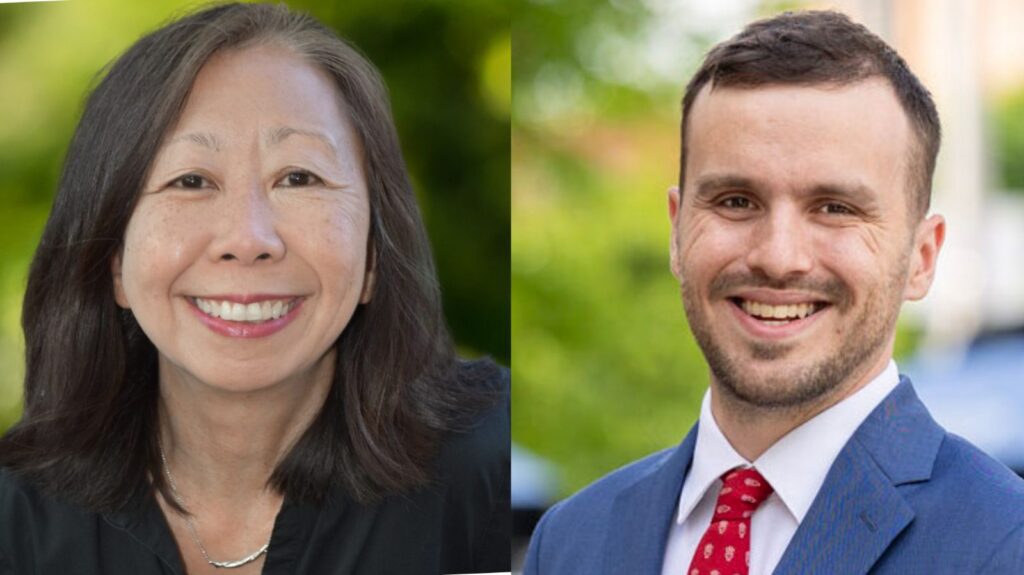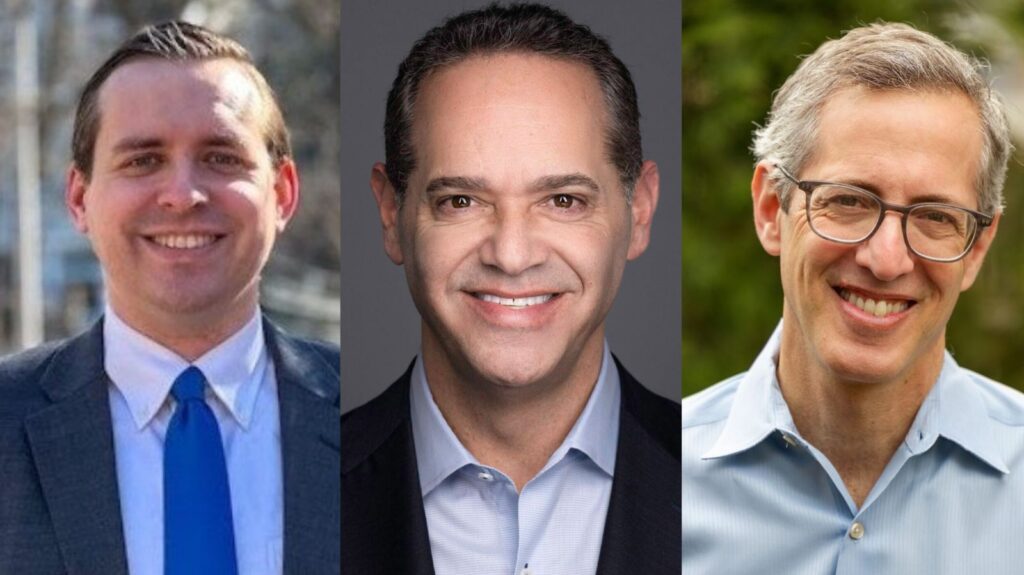StateHouse
Massachusetts State House. Wikimedia Commons photo
As the 2024 primary races approach the Sept. 3 finish line, candidates are ramping up their respective messaging, door-knocking efforts and fundraising.
Newton has two state representative races this year, as both state representatives Kay Khan and Ruth Balser are retiring, and both of those races have Democratic primaries. And one race—for the Middlesex 12th seat—has only Democrats running so Sept. 3 is that seat’s de facto general election.
Campaigns need money, and Newton’s Democratic state house candidates have been raking it in this spring and summer, according to campaign finance reports.
11th Middlesex
Amy Sangiolo, former Newton City Councilor running for the 11th Middlesex seat, had $19,499.12 in cash-on-hand as of July 31.
When she announced her candidacy in February, she already had more than $13,000 on hand from her previous campaigns for mayor.
Sangiolo’s biggest fundraising month was in April, when her campaign raised more than $11,000. She also spent more than $6,000 that month ($4,000 of that was to a worker for website and social media services).
Her opponent, financial auditor Alex Jablon, hasn’t been as flush with funds. He reported $10,173 cash-on-hand as of July 31. He also started his campaign later than Sangiolo and with no funds.
Jablon’s biggest cash haul month was also April—his first month as a candidate—when he raised more than $2,700. He spent $650 that month, most of which was a campaign logo designed by Boston-based Matt Rich.

12th Middlesex
There are three Democrats running for the primary to fill the Balser’s seat—Newton City Councilors Bill Humphrey and Rick Lipof and former City Councilor Greg Schwartz—and with no Republicans running, the winner of this primary effectively wins the seat.
Because they’ve held municipal office for a while and been running for those seats every two years, Humphrey and Lipof started their state representative campaigns with money already in their accounts.
But Humphrey has been raising money all along, for years before Balser announced her retirement, so he announced his campaign in February with nearly $28,000 cash-on-hand.
Humphrey saw his biggest fundraising month in March, when he raised more than $7,000.
As of July 31, Humphrey had $28,467.88 in cash-on-hand.
Lipof started with a lot less money—a little more than $1,400—because he hadn’t been out raising money for several years, but he managed to raise $14,000 in the last week of February to catch up to Humphrey in March, with the help of a couple dozen $1,000 donations (the maximum amount allowed per donor) in the first few weeks of his state house campaign.
March was also Lipof’s biggest fundraising month. He pulled in more than $31,000 that month.
As of July 31, Lipof had $35,169.34 in cash-on-hand.
Schwartz started at a financial disadvantage, since his campaign finance account was closed (he hadn’t held office in a few years). He loaned his campaign $5,000 in February at the start of his campaign and another $10,000 in April.
Things picked up in the spring for Schwartz. His biggest fundraising month was in April, when he raised (not including the $10,000 loan) more than $13,000.
Balser’s early June endorsement of Schwartz didn’t appear to have much impact at first –he raised less money that month than in previous months—but he may have seen a benefit of her campaigning for him in July, when he raised more than $9,400.
Heading into the hot home stretch of August, Schwartz had $14,785 in cash-on-hand.

The bigger picture
Campaign donations—especially individual donations from constituents—are seen as a measurement of excitement and momentum for a candidate. When people put down an investment in a campaign they put skin in the game.
The number of individual small-amount donors is an important factor because a total raised can be impacted by large donations and loans.
Lipof’s skyrocketing fundraising may indicate momentum for him and it may indicate an advanced operation, while Humphrey’s years of collecting donations may indicate a loyal voter base and consistent engagement.
With candidates like Jablon, who’s never run for office before, campaign finance reports can show the level of excitement a new candidate can bring and whether or not that candidate brings in donors who typically don’t donate.
Will Lipof’s steep campaign cash haul or Humphrey’s long-game fundraising strategy translate into voter turnout? Will Schwartz’s late momentum pay dividends toward the end of the race? Will the several debates held in recent weeks shift the donation trends in either race?
The August campaign finance reports will show who ended their primary campaigns with the most wind at their backs and who petered out near the finish line.
Stay tuned.